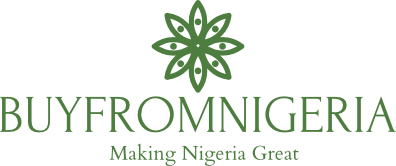The shea nut and butter industry have gained substantial recognition for their versatile applications in various sectors. As a wise entrepreneur, keying into this market has potential to become a profitable enterprise. In this blog post, we will help you discover the intricacies of making a significant profit through shea nut and butter processing and exporting. Let’s explore the essential aspects that can guide you on this journey.
Shedding light on the significance of shea nuts and butter, we’ll start with an overview of their diverse uses and their growing demand in different industries.
Unpacking the crucial role shea nuts and butter play in industries such as cosmetics, food, and pharmaceuticals, emphasising their economic value.
Stay tuned as we move forward to understanding the nuts and bolts of shea nut and butter production.
Understanding Shea Nut and Butter
A. Shea Tree and Its Cultivation:
Explore the lifecycle of the shea tree, detailing its cultivation process, and highlighting key factors that contribute to the quality of shea nuts.
B. Harvesting and Processing of Shea Nuts:
Dive into the intricacies of harvesting shea nuts, discussing optimal harvesting times and techniques. Transition into the processing phase, shedding light on methods that preserve quality.
C. Extraction and Processing of Shea Butter:
Delve into the extraction process of shea butter, detailing various methods and technologies. Discuss the significance of quality control during the extraction and processing stages.
Understanding the fundamental aspects of shea nut and butter production is crucial for establishing a solid foundation for your business. In the next section, we’ll analyse the market dynamics to help you make informed decisions.
Market Analysis
A.Global Demand for Shea Nuts and Butter:
Conduct an in-depth analysis of the global market, exploring the current and projected demand for shea nuts and butter. Highlight emerging trends and factors influencing market dynamics.
B. Identifying Potential Buyers and Markets:
Provide insights into identifying target markets and potential buyers. Discuss the diverse industries that rely on shea products and ways to strategically position your offerings.
C. Competitive Analysis and Pricing Strategies:
Conduct a competitive analysis of existing players in the shea nut and butter market. Explore effective pricing strategies that balance competitiveness with profitability, taking into account production costs and market trends.
By understanding the market landscape, you can tailor your business approach to meet the demands of consumers and stay competitive. In the upcoming section, we will guide you through the essential steps of setting up a shea nut and butter processing business.
Setting Up a Shea Nut and Butter Processing Business
A. Legal and Regulatory Considerations:
Navigate the legal landscape by discussing the necessary permits, regulations, and certifications required for operating a shea nut and butter processing business. Emphasise compliance with international standards.
B. Required Equipment and Facilities:
Outline the essential equipment needed for shea nut and butter processing, including crushers, roasters, and extractors. Provide insights into setting up facilities that adhere to industry standards and promote efficient production.
C. Sourcing Raw Materials and Quality Control:
Guide entrepreneurs in establishing reliable supply chains for shea nuts. Emphasise the importance of quality control measures at every stage, ensuring consistency and meeting market expectations.
Embarking on the journey of setting up your shea nut and butter processing business requires careful planning and adherence to industry standards. In the next section, we’ll explore strategies to maximise profitability in this niche market.
Maximising Profitability
A. Value-Added Products from Shea Butter:
Explore the potential for diversification by discussing value-added products derived from shea butter. This can include cosmetics, skincare products, and specialty food items. Highlight the growing demand for these products and the added revenue they can generate.
B. Cost-Effective Production Techniques:
Provide insights into optimising production costs without compromising quality. Discuss efficient processing methods, waste reduction strategies, and technology integration to enhance productivity.
C. Sustainable and Ethical Practices:
Showcase the importance of adopting sustainable and ethical practices in shea nut and butter processing. Highlighting environmental and social responsibility not only attracts conscious consumers but also aligns with global trends and regulations.
D. Market Research and Consumer Trends:
Encourage entrepreneurs to stay attuned to market trends and consumer preferences. Discuss the significance of continuous market research to adapt products and strategies, ensuring relevance and competitiveness.
E. Quality Assurance and Brand Reputation:
Emphasise the critical role of maintaining high-quality standards to build a strong brand reputation. Explore quality assurance measures, certifications, and the impact of positive customer reviews on brand perception.
F. Scaling Operations:
Discuss strategies for scaling up operations based on market demand. Address considerations such as production capacity, workforce management, and infrastructure expansion to meet growing market needs.
G. Financial Management and Investment:
Guide entrepreneurs on effective financial management, including budgeting, resource allocation, and strategic investment. Discuss potential funding sources and the importance of a well-structured financial plan for long-term success.
H. Adaptability in a Dynamic Market:
Highlight the dynamic nature of the shea nut and butter market and the need for adaptability. Discuss strategies for navigating market fluctuations, adjusting production volumes, and diversifying product offerings based on changing consumer demands.
Exporting Shea Nut and Butter

A. Understanding Export Regulations and Documentation:
Provide a comprehensive overview of the export regulations governing shea nut and butter. Discuss the necessary documentation, permits, and compliance measures required for international trade. Highlight the importance of staying informed about destination country regulations.
B. Building International Partnerships and Networks:
Guide entrepreneurs in establishing and nurturing international partnerships. Explore collaborations with distributors, retailers, and importers to expand market reach. Emphasise the role of networking in gaining insights into foreign markets and building trust with overseas stakeholders.
C. Logistics and Shipping Considerations:
Delve into the logistics of exporting shea nut and butter, covering aspects such as packaging, transportation, and shipping methods. Provide tips on selecting reliable logistics partners and ensuring the timely and secure delivery of products to international destinations.
D. Market-specific Strategies:
Tailor strategies for different target markets. Discuss cultural considerations, market trends, and consumer preferences in various regions. Highlight the importance of adapting marketing and product positioning to meet the unique demands of each market.
E. Risk Mitigation and Compliance:
Address potential risks associated with international trade, such as currency fluctuations, geopolitical issues, and trade barriers. Provide insights into risk mitigation strategies and compliance measures to navigate the complexities of global markets successfully.
F Utilising Trade Agreements and Incentives:
Explore trade agreements and incentives that can benefit shea nut and butter exporters. Discuss how entrepreneurs can leverage preferential trade arrangements to reduce tariffs and facilitate smoother transactions in specific regions.
G. Market Research for Export Success:
Emphasise the significance of thorough market research before entering a new export market. Discuss the importance of understanding local competition, pricing dynamics, and cultural nuances to tailor products and marketing strategies accordingly.
H. Customer Support and After-Sales Services:
Highlight the importance of providing excellent customer support and after-sales services to build trust and loyalty in international markets. Discuss strategies for handling customer inquiries, addressing concerns, and maintaining a positive brand image globally.
Marketing and Branding
A. Developing a Strong Brand for Shea Products:
Explore the elements of a compelling brand identity, including a memorable logo, brand messaging, and a unique value proposition. Discuss how a strong brand can differentiate shea nut and butter products in a competitive market.
B. Online and Offline Marketing Strategies:
Provide a comprehensive overview of marketing strategies encompassing both online and offline channels. Explore the power of digital marketing, including social media, e-commerce platforms, and SEO, alongside traditional marketing methods such as trade shows and partnerships.
C. Building a Customer Base and Maintaining Relationships:
Share insights into building a loyal customer base by emphasising quality, transparency, and customer engagement. Discuss strategies for customer relationship management, including personalised communication, loyalty programs, and feedback mechanisms.
D. Product Positioning in the Global Market:
Guide entrepreneurs in strategically positioning their shea nut and butter products in the global market. Discuss how to highlight unique selling points, address consumer needs, and tailor marketing messages to resonate with diverse international audiences.
E. Storytelling and Ethical Marketing:
Emphasise the power of storytelling in marketing shea nut and butter products. Share the story of the origin, ethical practices, and positive impact on local communities. Discuss how ethical marketing can resonate with conscious consumers and enhance the brand’s reputation.
F Utilising Influencer Marketing:
Explore the potential of influencer marketing in promoting shea nut and butter products. Discuss how collaborations with influencers, bloggers, and experts in the beauty and wellness industry can amplify brand awareness and reach a broader audience.
G. Packaging and Visual Appeal:
Highlight the importance of attractive and informative packaging in capturing consumer attention. Discuss design elements, eco-friendly packaging options, and the role of visual appeal in conveying product quality and brand values.
H. Participation in Trade Shows and Exhibitions:
Discuss the benefits of participating in international trade shows and exhibitions. Explore how these events provide opportunities for networking, showcasing products, and gaining exposure to potential buyers and distributors.
Challenges and Solutions
A. Common Challenges in the Shea Nut and Butter Industry:
Address common challenges faced by entrepreneurs in the shea nut and butter industry. These may include fluctuating commodity prices, supply chain disruptions, and regulatory complexities. Acknowledge the potential hurdles to prepare readers for proactive problem-solving.
B. Strategies to Overcome Obstacles and Setbacks:
Provide practical strategies for overcoming challenges, emphasising resilience and adaptability. Discuss contingency planning, diversification of revenue streams, and the importance of learning from setbacks to build a more robust business model.
C. Access to Funding and Financial Challenges:
Explore the financial challenges often encountered in the industry, such as securing funding for equipment, operations, and expansion. Discuss alternative funding sources, grant opportunities, and financial management practices to navigate these challenges effectively.
D. Climate and Environmental Factors:
Address the impact of climate and environmental factors on shea nut production. Discuss strategies for mitigating risks associated with climate change, ensuring sustainable agricultural practices, and adapting to environmental challenges.
E. Quality Control and Consistency:
Highlight the importance of maintaining consistent quality in shea nut and butter production. Discuss quality control measures, training programs for workers, and implementing
Conclusion
Summarise the key takeaways from the blog post, reinforcing the critical aspects of starting and growing a successful shea nut and butter processing and exporting business.
Offer words of encouragement to aspiring entrepreneurs entering the shea nut and butter industry. Highlight the potential for success, the importance of perseverance, and the fulfilling journey of contributing to a sustainable and impactful business.
Starting and scaling a shea nut and butter business involves navigating various challenges and seizing opportunities. By understanding the intricacies of cultivation, processing, marketing, and exporting, entrepreneurs can position themselves for success in a dynamic global market.
Remember, success in this industry goes beyond financial gains; it extends to making a positive impact on local communities, promoting sustainability, and contributing to the global demand for high-quality shea nut and butter products.
Embark on this entrepreneurial journey with passion, dedication, and a commitment to excellence. The world is ready for the unique contributions your shea nut and butter business can make. Good luck!












